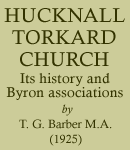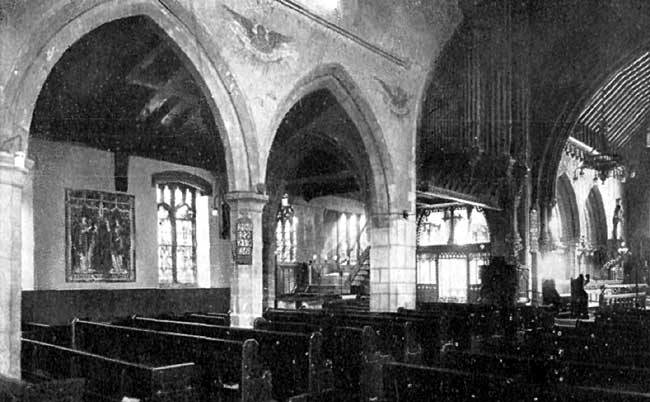
Hucknall Torkard Church—Interior.
The Transepts were added to the Church in 1887-8. The rapid increase in the population of Hucknall at the time made an enlargement necessary. It is very doubtful, however, whether the architect was justified in moving the ancient Chancel and Chapel of Our-Lady (even though the work of removal was most carefully carried out, stone by stone) to allow of the insertion of Transepts. Additional accommodation could have been provided without disturbing any of the ancient structure. It is generally admitted that the size of the Transepts is altogether out of proportion to the other parts of the Church. If another Chapel had been built on the south of the Chancel, and the aisles enlarged, the symmetry of the building would not have been so palpably disturbed.
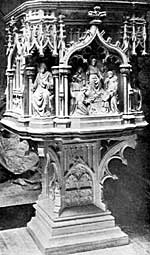
The pulpit.
The windows in the Transepts are some of the most beautiful specimens of Mr. Kempe's work. The two large windows deserve minute attention. The one in the North Transept tells the story of the Incarnation, and is admittedly one of the finest windows ever executed by a modern artist. The window at the end of the South Transept represents the Atonement.
There are two Incised Slabs on the south wall of the South Transept. The Slab bearing the Cross and the Sword in all probability marked the grave of a Crusader. We like to think that it was he who built the Chapel of Our Lady as a thank-offering for his safe return from the Holy Land. A very large number of the Lady Chapels attached to our ancient Churches were gifts of the Crusaders.
The medallion of Byron and the marble tablets on the south wall, inscribed with quotations from his works, were presented to the Church by Sir J. G. Tollemache Sinclair, whose father was at school with Byron. On the pillar supporting the South Transept arch there is a brass tablet erected to the memory of the Rev. Canon Godber, to whose generosity the Church owes so much of its beauty.
In the North Transept there are records on marble of the deaths of Luke Jackson, Esq., 1805, and Ann his wife; and also of Ann, the wife of the Rev. Luke Jackson, who died in 1821.
The Pulpit was placed in the Church by the Parishioners in memory of Rev. J. E. Phillips, who was Vicar of the Parish from 1879 to 1904.
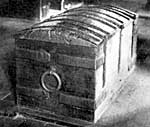
The Elizabethan Chest. 16th Century.
The Elizabethan Chest is shown, in the old engravings of the Church, as standing on the south side of the Sanctuary. It originally contained the Church Registers. Evidently no value was placed upon it in the 19th century, as the Sexton was allowed to use it as a storechest for his graveyard tools. It disappeared for some years. A local cowshed eventually yielded up such as remained of it, and the present Vicar had it refashioned after the old pattern.
The Lady Chapel was built in 1320. For some years it was used as an Organ Chamber and a Clergy Vestry. In 1919 the organ was removed to a loft in the North Transept, and the Chapel restored as a War Memorial Chapel at a cost of £1,600. The beautiful alabaster slab, inscribed with the names of its 260 heroes, the oak screens and panelling, the Altar and its hangings, and all the furniture of the Chapel, were provided out of the fund. The windows were the gifts of the Boys' Brigade, Mr. and Mrs. Enoch Bostock, and an anonymous donor. The picture above the slab, by a well-known artist, was presented by W. R. Percy, Esq. The small frame on the pillar contains some mosaics, arranged in the form of a cross, from the floor of the Temple at Jerusalem in the time of our Lord.
The tablet near the Aumbry was the gift of Sir J. G. Tollemache Sinclair, of whom mention has been made before. On the tablet a number of great men—Sir Walter Scott, Tennyson, Chateaubriand, Matthew Arnold, Victor Hugo, Shelley, Goethe, Ruskin, Macaulay, Disraeli, Mazzini—give their testimony to Byron's genius. The following lines from "Childe Harold" are also inscribed:—
If that high world which lies beyond
Our own, surviving love endears;
If there the cherished heart be fond,
The eye the same, except in tears;
How welcome those untrodden spheres!
How sweet this very hour to die!
To soar from earth and find all fears
Lost in thy light—Eternity."
An ancient Piscina may be seen on the south of the Chapel Altar. The stone at the back of the Piscina, bearing a mutilated cross, must have originally formed part of a coffin lid.
The Chancel.—The east window is a specimen of Mr. Kempe's early work. It was erected in 1883. On the panel representing Our Lord breaking bread with the Disciples to whom He appeared on the road to Emmaus after His Resurrection, the visitor will notice that the face of one of the Disciples bears a strong resemblance to the face of Byron.
The Piscina, and the Sedilia on the south wall, were restored in the 1871-2 alterations. When the Chancel was removed eastwards sixteen years later, a great architectural blunder was made in not including the three Sedilia in the Sanctuary. No doubt the size of the Sanctuary was reduced to a minimum to provide for the accommodation of a large choir, but we are surprised that any architect of standing should have allowed this consideration to have influenced him in preparing his design.
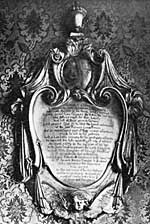
The Tablet in the Sanctuary erected to the memory of Richard Byron, the 2nd Lord, who died 1679.
The Marble Tablet on the north wall of the Sanctuary, erected to the memory of Richard Byron (1605-1679), the 2nd Lord, bears the following inscription:—
"Beneath in a vault is interred the body of Richard, Lord Byron, who, with the rest of his family, being seven brothers, faithfully served King Charles the First in the Civil War, who suffered much for their loyalty, and lost all their present fortunes. Yet it pleased God so to bless the honest endeavours of the said Richard, Lord Byron, that he repurchased part of their ancient inheritance, which he left to his posterity with a laudable memory of his great piety and charity. He departed this life on the 11th day of October, An. Dom. 1679, in the 74th year of his age. In the same vault is interred ye Lady Elizabeth, his first wife, daughter of George Russell, Esq., by whom he had ten children, and ye Lady Elizabeth, his second wife, daughter to Sir George Booth, Knight and Baronet, who appoynted this monument to be erected to the memory of her dear husband, and for her great piety and goodness acquired a name better than yt of Sones and daughters."
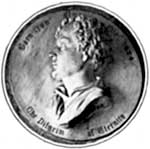
The Byron Medallion, given to the Church by Sir J. G. Tollemache Sinclair.
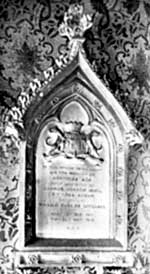
The Tablet in the Chancel erected to the memory of Augusta Ada, the daughter of the Poet.
There is a Medallion and Tablet erected to the memory of the Poet on the south wall of the Chancel. The Tablet, the inscription on which can be read in the illustration, was placed in the Church soon after Byron's burial by his half-sister, Augusta Mary Leigh. The Medallion was the gift of Sir J. G. Tollemache Sinclair.
There is another Tablet on the same wall bearing the following inscription:—
In the Byron Vault below lie the remains of
Augusta Ada,
only daughter of George Gordon Noel, 6th Lord Byron,
and wife of
William, Karl of Lovelace,
Born 10th Dec. 1815,
Died, 27th Nov. 1852.
R.I.P.
Below this Tablet is a Memorial erected by the Parishioners to Emmeline Ball, who for many years devoted her life to faithful service in the cause of God and His Church.
In 1881 a Slab was placed in the Chancel floor over Lord Byron's coffin. The marble, of a kind known as "Rosso Antico" (used extensively by the ancient Egyptians, and later by the Romans), was the gift of the King of Greece. The Slab bears the inscription in brass lettering;—
"Byron, born January 22, 1788: died April 19, 1821"
The inscription is surrounded by a beautiful brass wreath, the design of Mr. Belt.
The two brasses in the Chancel perpetuate the memory of Rev. J. E. Phillips, who for 25 years was Vicar of the Parish, and his son, John Lancelot Phillips, who died in Ceylon in 1902.
